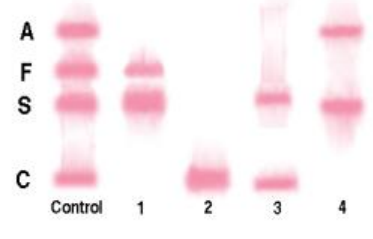Investigating the relationship between possible assessment tools (visual analogue scale, Tampa Scale of Kinesiophobia and Brief pain inventory) that could be used for SCD pain

Submission to VIJ 2024-08-01
Keywords
- Pain,
- sickle cell disease,
- Tampa Scale of Kinesiophobia,
- visual analogue scale,
- Brief pain inventory
Copyright (c) 2024 Dr. Ababio Boateng, Dr. EV Asare, Mr. R Reeks, Dr. GK Ababio

This work is licensed under a Creative Commons Attribution 4.0 International License.
Abstract
Abstract
Background: Pain is among the most frequent consequences of sickle cell disease (SCD) and this is of global health concern. Here, we present a relationship between three (3) possible pain assessment tools to guide and provide insight into SCD pain.
Aim: To investigate the plausible relationship between three assessment tools (visual analogue scale, Tampa Scale of Kinesiophobia and Brief pain inventory) that could be used for SCD pain
Methodology: The case-control study was located at the Ghana Institute of Clinical Genetics (sickle cell clinic) adult. The controls consisted of students of University of Ghana Medical School (UGMS) in Korle-Bu. After obtaining ethical clearance from College of Health Sciences (CHS-Et/M.1-P5.12/2023-2024), a validated pain assessment questionnaires were used for data collection. Four (4) mL of blood was collected in EDTA tube for full blood count and Hemoglobinopathy cellulose acetate electrophoresis. The data analysis was done utilizing the Statistical Package for the Social Science (SPSS) version 21 and Microsoft Excel 2016.
Results: There was a paradigm shift when tampa scale of kinesophobia (TSK) was included in the statistical analysis between visual analogue scale (VA) and Brief pain inventory (BPI) scores in SCD subjects. General characteristics, gender-matched and age-matched data had statistical significance in age, BMI, heart rate, Temperature, BPI PI, BPI PS, VA PR, VA PI, and some selected hematological parameters during ANOVA in the three groups. SS subjects appeared relatively lean and showed an increase in fear of musculoskeletal activities avoidance.
Conclusion: There was strong association between BPI, VA and TSK with a p-value of 0.000 in SCD subjects.
Keywords: Pain, Sickle cell disease, visual analogue scale, Tampa Scale of Kinesiophobia, Brief pain inventory (BPI)
References
- Taylor LE, Stotts NA, Humphreys J, Treadwell MJ, Miaskowski C. A review of the literature on the multiple dimensions of chronic pain in adults with sickle cell disease. Journal of pain and symptom management. 2010;40(3):416-35.
- Barakat LP, Patterson CA, Daniel LC, Dampier C. Quality of life among adolescents with sickle cell disease: mediation of pain by internalizing symptoms and parenting stress. Health and quality of life outcomes. 2008;6:1-9
- Toumi ML, Merzoug S, Boulassel MR. Does sickle cell disease have a psychosomatic component? A particular focus on anxiety and depression. Life sciences. 2018;210:96-105.
- Aboagye S, Torto M, Asah-Opoku K, Nuamah MA, Oppong SA, Samba A. Sickle cell education: a survey of antenatal healthcare givers. The American Journal of Tropical Medicine and Hygiene. 2019;101(3):684.
- Kato GJ, Piel FB, Reid CD, Gaston MH, Ohene-Frempong K, Krishnamurti L, Smith WR, Panepinto JA, Weatherall DJ, Costa FF, Vichinsky EP. Sickle cell disease. Nature reviews Disease primers. 2018;4(1):1-22.
- Gallagher PG. Anemia in the pediatric patient. Blood, The Journal of the American Society of Hematology. 2022;140(6):571-93.
- Venkatesan V, Srinivasan S, Babu P, Thangavel S. Manipulation of developmental gamma-globin gene expression: an approach for healing hemoglobinopathies. Molecular and Cellular Biology. 2021;41(1):e00253-20.
- Ballas SK, Darbari DS. Review/overview of pain in sickle cell disease. Complementary Therapies in Medicine. 2020;49:102327.
- Sil S, Cohen LL, Bakshi N, Watt A, Hathaway M, Abudulai F, Dampier C. Changes in pain and psychosocial functioning and transition to chronic pain in pediatric sickle cell disease: a cohort follow-up study. The Clinical journal of pain. 2020;36(6):463-71.
- Raja SN, Carr DB, Cohen M, Finnerup NB, Flor H, Gibson S, Keefe FJ, Mogil JS, Ringkamp M, Sluka KA, Song XJ. The revised International Association for the Study of Pain definition of pain: concepts, challenges, and compromises. Pain. 2020;161(9):1976-82.
- Gold MS, Gebhart GF. Nociceptor sensitization in pain pathogenesis. Nature medicine. 2010;16(11):1248-57.
- Chiarotto A, Maxwell LJ, Ostelo RW, Boers M, Tugwell P, Terwee CB. Measurement properties of visual analogue scale, numeric rating scale, and pain severity subscale of the brief pain inventory in patients with low back pain: a systematic review. The journal of pain. 2019;20(3):245-63.
- Stanhope J. Brief pain inventory review. Occupational Medicine. 2016;66(6):496-7.
- Velthuis MJ, Van den Bussche E, May AM, Gijsen BC, Nijs S, Vlaeyen JW. Fear of movement in cancer survivors: validation of the Modified Tampa Scale of Kinesiophobia—Fatigue. Psycho‐Oncology. 2012;21(7):762-70.
- Ballas SK. More definitions in sickle cell disease: steady state v base line data. American journal of hematology. 2012;87(3):338.
- Ismail AK, Ghafar MA, Shamsuddin NS, Roslan NA, Kaharuddin H, Muhamad NA. The assessment of acute pain in pre-hospital care using verbal numerical rating and visual analogue scales. The Journal of emergency medicine. 2015;49(3):287-93.
- van Tuijn CF, Sins JW, Fijnvandraat K, Biemond BJ. Daily pain in adults with sickle cell disease—a different perspective. American journal of hematology. 2017;92(2):179-86.
- Ababio GK, Acquaye J, Ekem I, Aleksenko L and Quaye IK. Variation in Pain and Clinical Indices among Patients with Sickle Cell Disease in Ghana. J Blood Disord. 2016;3(1): 1037.
- Hajjar, S. T. Statistical analysis: Internal-consistency reliability and construct validity. International Journal of Quantitative and Qualitative Research Methods. 2018; 6(1), 27-38.
- Hulin, C., & Cudeck, R. Cronbach’s alpha on two-item scales. Journal of Consumer Psychology. 2001;10(1/2), 55.
- Moheeb H, Wali YA, El‐Sayed MS. Physical fitness indices and anthropometrics profiles in schoolchildren with sickle cell trait/disease. American journal of hematology. 2007;82(2):91-7.
- Behera SK, Kar S, Kar M. Haematological profile of sickle cell patients attending tertiary health care centre of southern Odisha: a cross - sectional study. International Journal of Research in Medical Sciences. 2020 Jan;8(1):170.
- Adebiyi, A., Oyebowale, O., Olaniyi, A., & Falase, A. (2019). Heart rate variability study in adult Nigerian subjects with sickle cell disease during vaso-occlusive crisis. Nigerian Postgraduate Medical Journal. 2019;26(1), 8.
